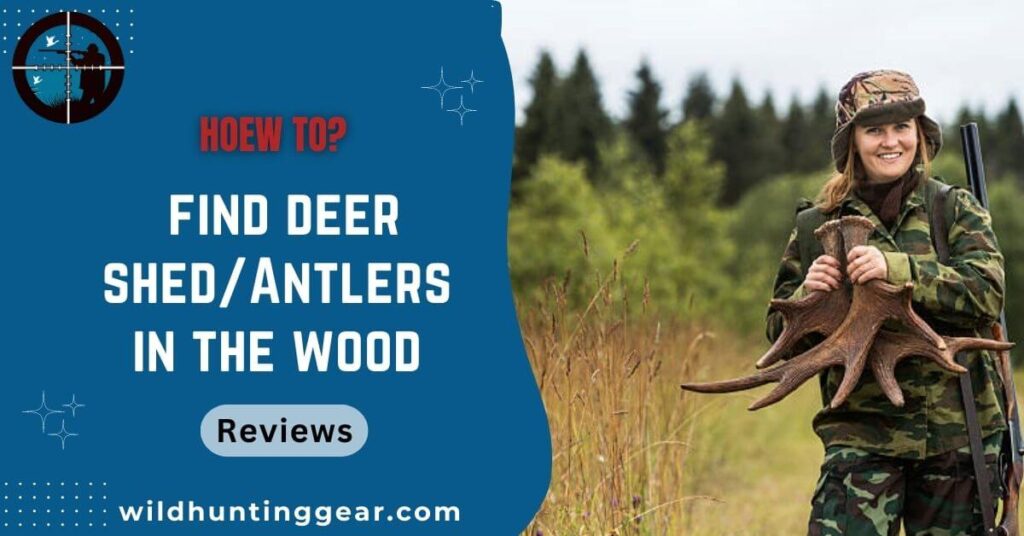Finding deer sheds/antlers in the woods is a great way for hunters and outdoors enthusiasts to connect with nature and enjoy the scenery, while also being rewarded for their efforts. This guide will provide tips and tricks on how to successfully find deer sheds/antlers in the woods so that you can add them to your collection or give them away as gifts.

We will cover how to find the right area, the best times of year to search and some additional tips on how to increase your chances of success. By following these guidelines, you can become an expert shed hunter in no time. So let’s start!
What is the deer shedding process?
Deer shedding is a natural process that happens every year. During this time, deer will shed their thick winter coats in order to prepare for the warmer summer weather. This process usually takes place in the early spring months and can last anywhere from two to four weeks.
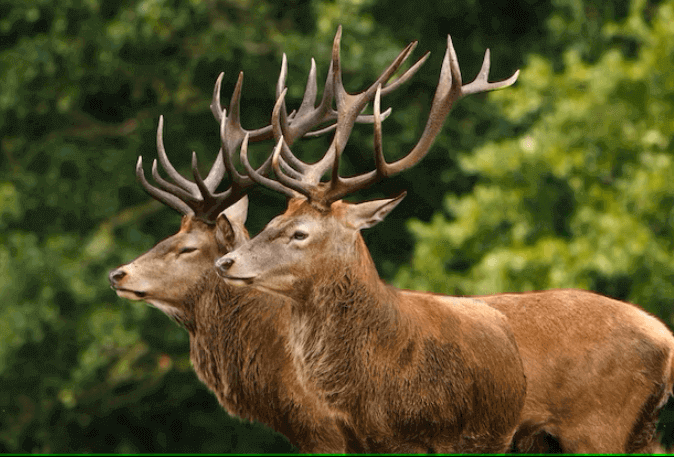
During the shedding period, deer will lose much of their body mass as they shed their winter coats. This can lead to a decrease in energy levels and reduced activity, so it’s important for deer owners to provide their animals with adequate nutrition to help them stay healthy through the shedding period.
How to find deer sheds/antlers in the woods?
When looking for deer sheds or antlers in the woods, the best way to find them is by scouting out areas that deer frequent. Start by visiting areas near food sources such as fields, meadows orchards and dense brush.
Deer are most active during dawn and dusk hours so be sure to check these locations at those times of day when they are most likely to be out foraging. Look for tracks, beds, droppings and browse lines that indicate deer activity in the area.
When you have identified a location where deer frequent, look around for signs of shed antlers or other evidence of a buck’s presence such as rub trees or scrapes. If you find what appears to be an antler, pick it up and inspect it to ensure that it is indeed a shed antler and not something else.
When you have successfully located deer sheds or antlers in the woods, be sure to respect the area by leaving them as you found them.
By following these steps, you will be able to successfully find deer sheds or antlers in the woods and help preserve habitat for future generations.
Choosing the right time and location
When it comes to finding deer sheds or antlers in the woods, timing and location are key. The best time of year to start looking is usually in late winter or early spring when the snow has melted and the ground is thawing out. Deer will often shed their antlers between January and April, so this is a great time to be on the hunt.
When it comes to location, you should look for areas where deer are known to frequent. This includes parks, meadows, clearings near forests and other transitional areas between fields and woods. Look for trails that show signs of recent deer activity. Deer like to travel along the same paths as they are familiar with them so these areas can be a great place to find antlers.
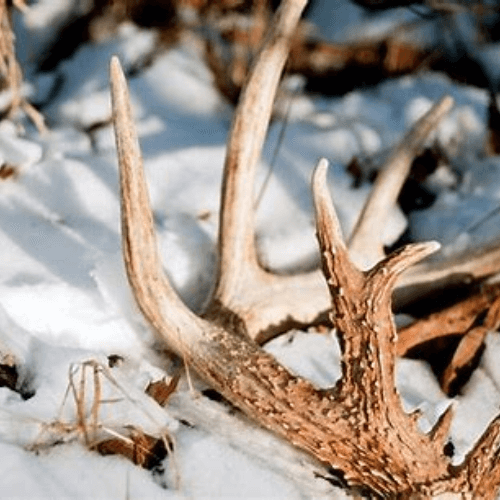
If you see a deer while looking for sheds, take note of where it was last seen and keep an eye out for any antler or shed drops nearby. If you are lucky enough to spot one, approach carefully and make sure not to disturb the area too much as this could startle the deer away.
Essential tools and equipment used to find deer sheds/antlers in the woods
The important tools for finding deer sheds/antlers in the woods are as follows:
- Binoculars:
Binoculars are essential for spotting antlers from far away, which can help you save time and energy when searching. Additionally, a good set of binoculars will be able to easily pick up any movement or activity in the area.
When choosing a pair of binoculars, make sure they are lightweight and comfortable to carry around while you are out searching.
- Flashlight:
A flashlight is also an essential tool for finding deer sheds/antlers in the woods. In some cases, it may be difficult to see the antlers during daylight hours due to shadows or dense vegetation. A flashlight will help you to see the antlers more clearly and make it easier to find them in darker areas.
- Rugged clothing:
When searching for deer sheds/antlers, it is important to wear clothing that is suitable for outdoor activities. This includes sturdy boots, long pants, a jacket or coat, hat and gloves. The clothing should be able to provide protection from the elements while also allowing you to move freely.
- GPS:
A GPS unit is an invaluable tool for finding deer sheds/antlers in the woods. It can help you identify the exact location of a shed or antler, making it easier to track down and collect them.
Additionally, it can be helpful in planning your search route, allowing you to cover more ground in a shorter amount of time.
- Knife:
A knife can be very helpful when searching for deer sheds/antlers in the woods. It can be used to cut through dense vegetation or branches that may be blocking your view or making it difficult to access antlers.
Additionally, it can come in handy for other purposes, such as preparing food or constructing a shelter.
- Tracking stick:
A tracking stick is an invaluable tool for finding deer sheds/antlers in the woods. A tracking stick can help you identify fresh tracks and trails that may lead to antlers. Additionally, it can be used to mark areas where antlers have been spotted, allowing you to go back and search for them later.
- Map and compass:
Even with a GPS or smartphone, it’s wise to have a physical map of the area you’re exploring. A compass can help you orient yourself and navigate in case of technology failure.
These are just a few of the essential tools and equipment that should be taken along when searching for deer sheds/antlers in the woods.
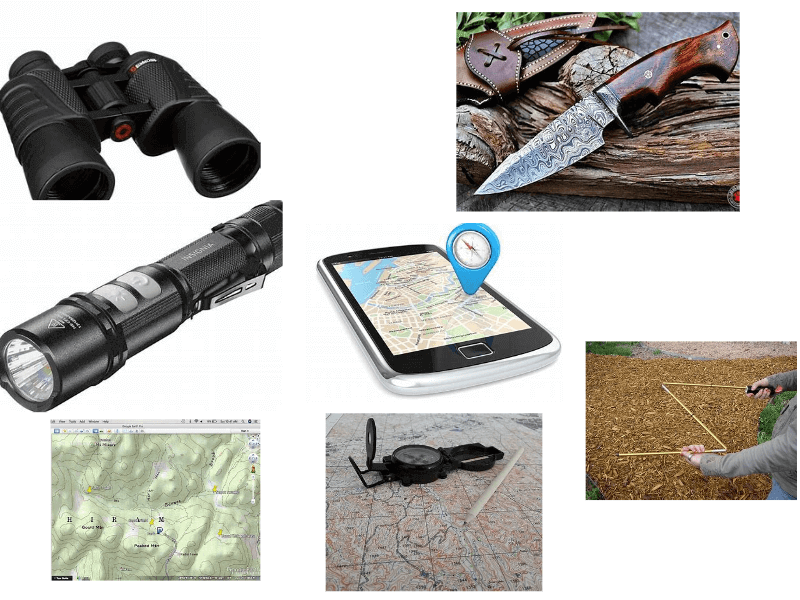
Searching techniques and strategies for finding deer sheds
1) Look for trails and tracks:
The most important thing to do when searching for deer sheds is to look for trails and fresh tracks. Deer will usually follow the same general pathways each day, so if you can identify their regular routes, it could lead you right to a shed or antler. Be sure to pay close attention to any changes in the color of the ground or vegetation that may indicate a new trail.
2) Stay alert and scan the area:
When searching for deer sheds, it is important to stay alert and scan the entire area. Pay attention to any small details that could be antlers, such as patches of darker brown on the ground.
This can often be a tell-tale sign that an antler has been dropped in the area. Additionally, be sure to look up into the trees for any antlers that may have gotten stuck in branches or other vegetation.
3) Check near water sources:
Deer often congregate around water sources, such as ponds, streams and rivers. Checking these areas can increase your chances of finding a shed or antler since deer are more likely to shed in these areas.
Additionally, the moisture from the water can help keep antlers preserved and intact for longer periods of time.
4) Follow deer tracks:
If you identify fresh deer tracks in an area, it could be a sign that one or more deer have recently passed through. Following these tracks can lead you to an antler or shed, as deer often drop them in the same spot each time. Additionally, this can help you identify where the deer are currently traveling, allowing you to plan your search accordingly.
5) Look for signs of rubbing:
When searching for deer sheds/antlers in the woods, it is important to look for signs of rubbing. Deers often rub their antlers against trees and other vegetation to mark their territory, leaving distinct signs behind.
Additionally, these areas could be a good source for finding sheds since deer tend to shed antlers when they rub them.
6) Use the wind:
When searching for deer sheds or antlers in the woods, one of the most effective techniques is using the wind to your advantage. Deer have an excellent sense of smell and will be able to detect you from far away if you are not careful. By positioning yourself downwind of them, you can reduce the chances of being detected and increase your chances of spotting a shed or antler.
7) Utilize technology:
Technology can be a great tool for finding deer sheds/antlers in the woods. There are several apps and websites that can provide information on where to find antlers, as well as tracking tools that can help you locate deer in real-time. Additionally, using a GPS unit or smartphone can make it easier to plan your search route and mark spots where sheds have been found.
By following these tips and techniques, you will be able to maximize your chances of success and find more deer sheds/antlers in the woods.
Tips for Successful Shed Hunting
- Prepare for the season: Before you even step foot in the field, make sure to do your research and plan ahead. Knowing the area you’re hunting is essential to finding sheds. Read up on local regulations and landowner policies
- Get Ready for rugged terrain: Shed hunting requires a good amount of walking, climbing, crawling and trekking. Make sure you have the right clothing and gear to get you through whatever terrain you may encounter.
- Use your eyes: When out in the field, it’s important to use your eyes and not just rely on binoculars or spotting scopes. Look around for any sign of game activity, such as tracks or browsing trails. Also, take note of any windbreaks or thick cover that could provide a place for deer to bed down.
- Bring your senses: Shed hunting is all about using your senses. You have to be able to smell deer and other game, see the sheds in the environment and use your ears to listen for animals moving around you.
- Practice safety: Before heading out into the field, make sure you know your safety protocols. Wear bright colors to make yourself visible and always carry a first-aid kit in case of an emergency.
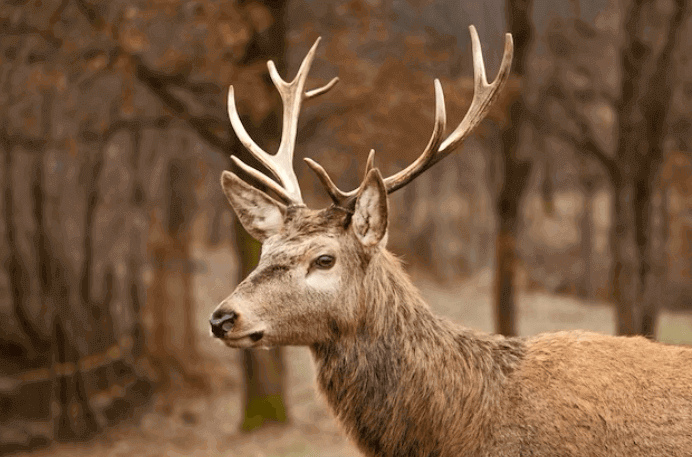
Consequence
Finding deer sheds or antlers in the woods requires understanding deer behavior, employing effective search techniques and being patient and persistent.
By exploring deer-frequented areas, looking for visual cues and scanning the ground systematically, you can increase your chances of discovering these natural treasures. Enjoy the process and gain a deeper appreciation for wildlife.
